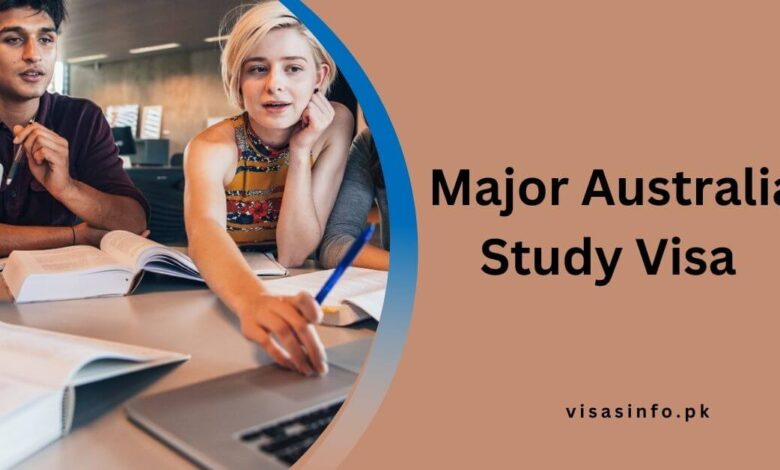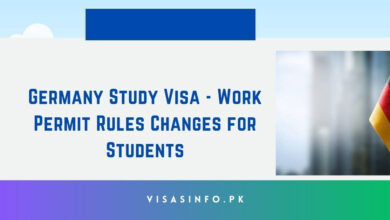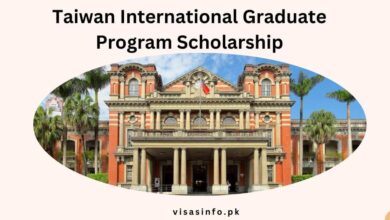Major Australia Study Visa Update – 2024

Acknowledging the most recent updates to the visa procedures and regulations of Australia. Greetings and salutations to all international students who aspire to pursue their education in Australia. This is yet another exhilarating episode that is jam-packed with critical information. The most recent Australia study visa situation that pertains to the November and February intakes will be examined.
Australia has consistently been a preferred destination for students from around the world due to its exceptional educational system, magnificent landscapes, and diverse cultural heritage. However, it is crucial to remain informed about the most recent advancements and challenges associated with the visa application process. This article is the most up-to-date source of information, regardless of whether you plan to commence your studies in November or during the upcoming February intake.
Study in Australia
Prospective international students who aspire to pursue their education in Australia have encountered significant challenges in obtaining a student visa in recent times. The objective of this article is to provide a comprehensive explanation of the most recent changes to visa requirements and procedures in Australia. As well, as discuss the challenges associated with visa approval rates and financial eligibility. This article addresses two substantial updates:
- Primarily, the financial prerequisites for obtaining an Australian student visa have increased.
- Secondly, the changing landscape of visa processing
Financial Requirements for an Australian Student Visa
In the past, foreign students were required to demonstrate their financial stability by displaying a specific amount of money in their bank accounts. However, we would like to discuss the substantial increase in these financial obligations as our initial update.
In the past, students were required to accumulate between 21,000 and 22,000 Australian dollars to obtain a student visa. However, recent reports indicate that this amount has been increased by 17%, resulting in a requirement of 24,505 Australian dollars. This substantial increase in the minimum financial requirement is a significant obstacle for numerous prospective students.
It is crucial to bear in mind that to apply for an Australian student visa, this amount must be promptly accessible in your bank account. Your chances of obtaining a visa may be jeopardized if you fail to meet this requirement. Additionally, it is anticipated that this modification will be implemented on registering for visas after this date, students must be prepared to meet the heightened financial requirements.
Check Also: Australia New Measures in Response to Student Visa
Modifications to financial documentation
A growing number of Australian universities and colleges are now requiring students to provide evidence of their savings in place of using fixed deposits (FDs) as a funding source, in addition to the heightened financial threshold. In the past, a significant number of students would utilize FDs as evidence of financial stability to satisfy visa requirements. Nevertheless, colleges are now emphasizing the importance of maintaining currency in bank accounts as a more reliable source of funding.
This modification in the financial documentation requirements may have consequences for students who previously depended on FDs to establish their financial eligibility. You must inquire about the specific financial documentation requirements of the institution of your choice.
Benefits of Major Australia Study Visa
- Employment Opportunities During Studying: International students with an Australian study visa are permitted to work part-time during their courses (up to 48 hours per fortnight) and full-time during vacations. This enables students to acquire work experience and provide for themselves financially.
- Post-Study Work Visa: Students are eligible for the Temporary Graduate Visa (Subclass 485) upon completion of their studies. This visa enables them to reside, study, and work in Australia for a period of 2 to 4 years, contingent upon their qualification level.
- Permanent Residency Pathway: Under Australia’s skilled migration program, certain qualified graduates may be eligible for Permanent Residency (PR). This provides a long-term solution for individuals who desire to remain in Australia and develop their careers.
- World-Class Education: Australia is home to numerous prestigious universities and educational institutions. A global reputation for academic excellence, state-of-the-art facilities, and high-quality education are all available to students.
- Cultural Diversity and International Community: The multicultural environment of Australia fosters an inclusive environment for students from all over the world, offering cultural exchanges and networking opportunities.
- Family Sponsorship: Students are permitted to include their family members (spouse and children) in their visa applications, which enables them to accompany the student to Australia. Children are permitted to attend education, and partners are permitted to work full-time.
- Travel Freedom: The study visa enables students to travel freely in and out of Australia during their course, providing the opportunity to visit family and investigate other countries.
- Scholarship Opportunities: Universities, the Australian government, and other organizations offer a diverse selection of scholarships and financial assistance programs to international students.
Visa Processing Scenario
In recent years, the process of obtaining a visa has become increasingly challenging. The rejection rate for visa applications has increased among numerous students who have submitted applications. The process of obtaining an Australian visa has become more challenging for students as they apply for higher education programs. Rejection has occurred to applicants who possess sincere intent and have maintained solid academic records.
Prospective students are experiencing feelings of anxiety and apprehension regarding this situation. It is imperative to acknowledge that the duration of the visa application process and the probability of approval can be influenced by a variety of factors, including nationality, intended course of study, and personal circumstances. Nevertheless, the prevalent trend of a greater number of visa rejections has resulted in a significant number of students feeling frustrated.
Future Visa Processing Outlook
It is recommended that individuals who are delaying the submission of their visa applications exercise patience and maintain a vigilant watch over the status of the visa process. Recent trends suggest that the approval of visas may improve in the months ahead. At present, it is necessary to wait for the situation to stabilize before finalizing your visa application.
If you are aiming for an intake in November, you may wish to delay your evaluation of the visa application process until October. Your likelihood of obtaining a visa can be significantly enhanced by delaying.
Conclusion
In summary, the recent changes to Australia’s visa criteria, such as the substantial increase in financial thresholds, have made the application process for a student visa more challenging. Prospective students must be apprised of these modifications to formulate suitable financial strategies.
Additionally, the evolving visa processing environment has increased the number of student visa applications that are being rejected. Students must exercise patience and remain informed when preparing their visa applications, as the situation may improve in the future.
For the most recent information on visa-sponsored jobs, prospective paths, benefits, application processes, and other topics, please visit Newsnowgh.com.
Frequently Asked Questions:
-
Which student visa is easy to get in Australia?
For students coming to Australia to study, the most common visa is the student visa (subclass 500). After completing studies in Australia, eligible students can apply for a Temporary Graduate Visa (subclass 485) to live and work in Australia.
-
Do 482 visas get rejected?
If the Department is not satisfied that the business can financially support the nominated position, then the application will be refused.
-
Which visa is best for students?
F1 visas are by far the most common form of international student visa in the U.S. F1 students must maintain the minimum course load for full-time student status. F1 status allows for part-time, on-campus employment (fewer than 20 hours per week).



